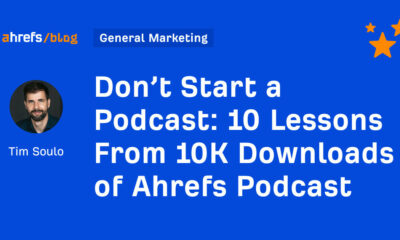According to data released by advertising intelligence platform MediaRadar, spending on podcast advertising was up over 20% YoY in 2021. Q4 ad spend alone was $160 million, making a total of $590 million for the year. It is estimated that more than a third of Americans now listen to podcasts regularly. Technology brands became the biggest spenders, pushing media into second place.
Familiar names among the top 10 highest spending podcast advertisers are Amazon, Capital One, Comcast and State Farm. Most podcast advertising is located midroll with durations of 30 and 60 seconds being most common. Brands seem confident in the effectiveness of podcast advertising, with 79% of advertisers from 2020 continuing to buy in 2021.
Read next: How to get the best ROI from podcast advertising
Why we care. We say yet again, channels are proliferating. This means fragmented audiences, of course, but also potentially highly engaged audiences. Podcasts create the opportunity for focused contextual advertising as well as for more general brand messaging.
Speaking of messages, consumers (and B2B buyers) are delivering a clear one. Meet us where we are.







![SEO Experts Gather for a Candid Chat About Search [Podcast] SEO Experts Gather for a Candid Chat About Search [Podcast]](https://articles.entireweb.com/wp-content/uploads/2024/09/SEO-Experts-Gather-for-a-Candid-Chat-About-Search-Podcast-400x240.png)
![SEO Experts Gather for a Candid Chat About Search [Podcast] SEO Experts Gather for a Candid Chat About Search [Podcast]](https://articles.entireweb.com/wp-content/uploads/2024/09/SEO-Experts-Gather-for-a-Candid-Chat-About-Search-Podcast-80x80.png)




![YouTube Ad Specs, Sizes, and Examples [2024 Update] YouTube Ad Specs, Sizes, and Examples](https://articles.entireweb.com/wp-content/uploads/2024/06/YouTube-Ad-Specs-Sizes-and-Examples-400x240.jpg)
![YouTube Ad Specs, Sizes, and Examples [2024 Update] YouTube Ad Specs, Sizes, and Examples](https://articles.entireweb.com/wp-content/uploads/2024/06/YouTube-Ad-Specs-Sizes-and-Examples-80x80.jpg)






You must be logged in to post a comment Login